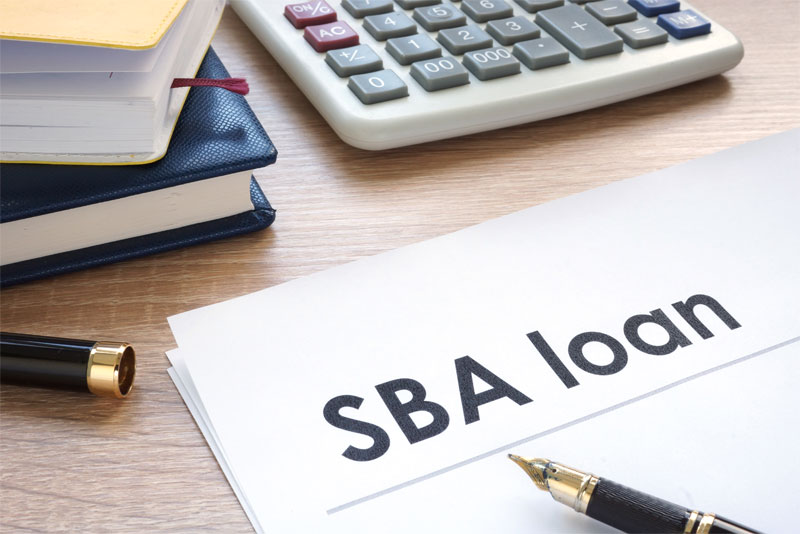What You Need to Know About the EIDL Application Process and Document Requirements

If you haven’t yet applied for an Economic Injury Disaster Loan (EIDL), you have until December 21, 2020 to submit your application. There is no need to apply again if you’ve already applied, as the loans are vetted on a first-come-first-serve basis.
At the latest count, the U.S. Small Business Administration (SBA) has approved 3,612,236 EIDL applications, totaling $191,994,805,796 for small businesses affected by the pandemic. Unfortunately, so many small businesses continue to suffer losses, so the need for relief funding is ongoing.
Let’s do a recap of the Economic Injury Disaster Loan eligibility criteria and then cover what you need to know about the EIDL application approval process.
Qualifying for the EIDL Assistance
For those businesses who have not yet applied, here is a quick reminder of loan eligibility criteria.
The CARES Act provides EIDL funding relief in the form of a loan of up to $2 million for small businesses affected by COVID-19. If you were lucky enough to also receive an EIDL grant, those monies do not have to be paid back. The grants are no longer available; however, small businesses can apply for the loan directly through the SBA website.
Businesses must have fewer than 500 employees to be eligible for the loan. All entity types can apply, including independent contractors, sole proprietors, LLCs, S Corps, C Corps, partnerships, and nonprofits. The loan terms are up to 30 years, and the interest rate is 3.75% (for nonprofits, it is 2.75%). Repayment begins one year after loan disbursement. The money must be used for fixed debts (rent, etc.), payroll (not bonuses or dividends), accounts payable, and other expenses you can’t pay due to COVID-19 related losses.
Fortunately, the CARES Act suspended the minimum requirements for how long a company must be in business and dismissed the requirement it had to be previously turned down for a loan by other sources.
If your EIDL loan is below $200,000, you won’t have to provide a personal guarantee.
The EIDL Application Process
The online application is similar to most loan applications and requires you to submit thorough company information, such as the number of employees, the business’s legal name, and fictional business name (DBA), Federal Tax ID Number (EIN). If your business doesn’t have a Federal Tax ID number, the owners’ social security numbers will suffice.
You need to identify the business’s legal entity, provide financial information, including gross revenues and cost of goods sold, and estimate your losses due to the pandemic, including any loss in rents from rental properties. Finally, the application asks for personal information from all owners with over 20% ownership.
Once you’ve supplied the information in the online application, you will receive an estimate of the qualified loan amount. This does not mean the loan is approved. The borrower then chooses the loan amount up to the maximum offered.
Required Documentation for EIDL Approval
Once you’ve selected your loan amount, the application is reviewed once more, and a loan officer reviews the information for completeness. At this stage, you may be asked to submit additional documentation depending on your business entity, the loan amount, and other factors determined by the loan officer reviewing your application.
The officer may want to see your business’s last tax returns and financial statements.
For C Corps and Limited Liability Companies (LLCs), the loan officer wants to make sure the business is in good standing with the state. In other words, the business must be compliant with state incorporation requirements and have Articles of Incorporation or Articles of Organization.
You’ll also need to provide meeting minutes showing the Board approved the EIDL application (also referred to as Board Resolution for SBA Loan) and a signature page for the authorization of the loan closing documents.
Additional documentation may include business licenses and permits, personal tax returns, your schedule of liabilities, and employer quarterly tax form 941.
Staying Within the Lines
Since the pandemic is still raging, you may need a loan increase beyond what was first expected. If so, you have up to two years into the loan to apply for additional funds.
Make sure you read the fine print on the loan documents, as loans over $25,000 require the businesses to retain specific collateral. Borrowers must also keep detailed accounting records five years before loan disbursement and three years after, including receipts, invoices, and contracts.
The SBA does not specify a deadline for the funds to be spent but assumes the loan will be used for working capital until “normal” operations are restored.
In addition, borrowers looking to use the loan to buy new equipment or products must attempt to use the money on American-made products. Borrowers may also be subject to audits and be asked to carry hazard insurance on collateral and key-man insurance.
Be aware, as with any loan, the lender retains the right to take possession of the collateral if you are unable to pay back the loan. For C Corporations and LLCs, the liability belongs to the company, as it is a separate legal entity from the owners.
Help is Here!
If your business fell out of compliance and you do not have the appropriate paperwork to demonstrate good standing, CorpNet can help. We provide registered agent services in all 50 states and can assist with all forms of business formation from LLCs and corporations to nonprofits. We can help you get back into compliance and we’ll help you stay in compliance.

Comments are closed.